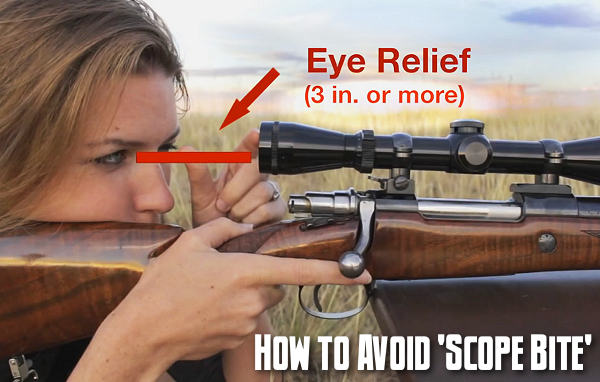Saturday, October 7, 2023: How riflescopes work. A good riflescope is essential to many types of competition and the vast majority have scoped rifles. Some F-Class and Benchrest competitors now use optics up to 60X in magnification. Basics of Riflescopes This Burris video (above), covers the key aspects to scope function: zoom magnification (windage control), elevation control (front or sides mount), and ocular focus. Some tips are available to get a new scope working smoothly. It’s a good idea to rotate both the windage and elevation knobs as well as the power control a couple of times. The video below explains how to set the ocular focus controls in an optimal way. Scope Break-In and Diagnosing Issues – Great Video! We recommend that serious shooters view this video from beginning to end. Mike Baccellieri from Leupold, a very knowledgeable scope engineer, explains scope operation in detail. He also gives some very useful advice on how to prepare a new scope before use (see 36:50 mark). He recommends running the controls to full travel multiple times with a new optic. The video explains that, when using a new scope, or one that’s not been used often, it can be effective to rotate the elevation past the desired setting, then return a click. (See the 35:40 mark). The expert also explains, near the end, how to use a mirror to check if the scope mounting (base or rings) are not aligned with bore axis. This will force you to travel more to hit the target. (See the 42:00 time-mark). This is caused by scope rails that are slightly off-axis.First Focal Plane vs. Second Focal Plane The main difference between First Focal Plane and Second Focal Plane scopes is how the reticle and its hash marks appear at different magnifications. The reticle (and its line thickness) increases in size with an FFP scope. The angular hash mark (in MOA or Mils) remains constant at all magnification levels. On a 10-30X scope with FFP, a 0.1 mil hash mark represents SAME angular measurements at 10X, 30X or 20X (or any other magnification). The FFP system has a downside in that the reticle can appear thicker at high magnification. For a PRS/NRL competition, where targets are at different distances, the hash marks must represent the same angle measurement at all power levels. On a Second Focal plane (SFP) telescope, however, the reticle (and hash mark) appear visually (in terms of thickness) the same for all magnification settings. The manufacturer will have designed the hash marks to be precise only at a certain magnification. You could, for example, have Hash marks that are exact to 1 MOA at 10X. Zoom the scope up to 20X, and the same reticle will cover 2 MOA. SFP scopes have become popular among competition shooters, who aim at known distances. When aiming at F-Class and benchrest targets, it is advantageous to not have thick reticle marks at 25X-50X.
This video also explains MOA vs. Milrad (Milliradian). A Minute of Angle (MOA), also known as a angular measurement, represents 1.047? at 100 yards. Modern MOA scopes typically have 1/4 MOA or even 1/8 MOA clicks. Milliradian is another angular measure defined as one-thousandth radian. Milrad scopes have 0.1 Milrad clicks. What is 0.1 mil at a 100 yard distance? One mil is 3.6 inches, so 0.1 Mil is 0.36″, or roughly a third inch, at 100 yards. This is pretty close to the quarter-inch (1/4 MOA), which is commonly found on MOA riflescopes.
Sightron produces excellent high-magnification SFP Zoom Scopes that are favored by many of their competitors. These have been very reliable and provide excellent performance for the price. Start by supporting the rifle using a front and rear rest. Use a level to check that the rifle isn’t tilting left or right about the barrel bore axis. You will then align the vertical axis of your scope. We recommend using a plumb line — a weighted string that hangs straight downward. This can be done indoors or outside. Be sure to align your reticle’s axis vertically with the plumb line. Do not move the rifle. In this case, aligning the reticle vertical axis to the plumb line will result in your turrets being slightly titled. This is a manufacturing defect that can cause an error when you enter a large value of clicks (e.g. When mounting your scope, you should also consider the eye relief – the distance between the rear “ocular lens” and your eye. When mounting the scope put your head at the position where you normally shoot. Note that your optimal head position will be different when shooting from a prone position compared to shooting from a shooting bench. You may want adjust the scope placement. This Editor had his comp rifle scope moved about an inch backward when local club match changed from prone shooting to bench shooting.Video collection suggested Boyd Allen
Similar Posts:Tags: Elevation, Mil, Milrad, MOA, Scope Function, Windage

















